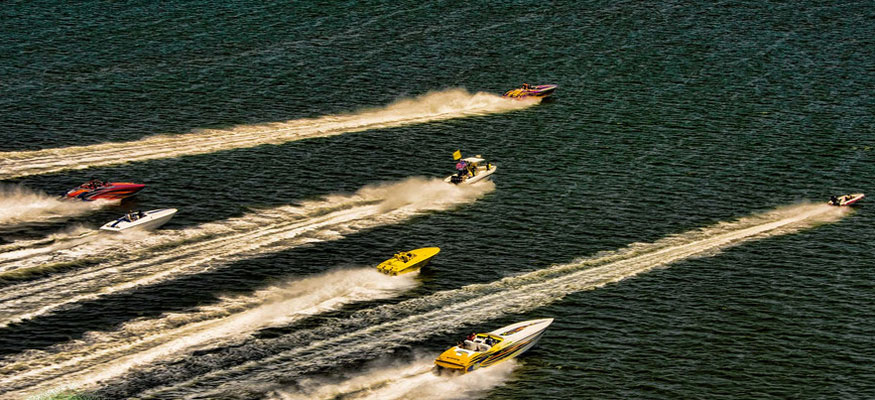Tres Martin’s Safety Corner: Drive It Yourself
Just about every offshore powerboat racing team has a throttleman and a driver, and it’s been that way a long, long time. The notion behind splitting the duties is to scale back the specific tasks for each man in the cockpit while they develop the skills required to work expertly and efficiently together—and win races.
In poker runs and other recreational go-fast boat events, the best call is for one person to handle the driving and throttling duties. Photo courtesy/copyright Jay Nichols/Naples Image.
So why shouldn’t the same type of driver-and-throttleman setup work just was well in high-performance pleasure boating? There are a lot of reasons, according to Tres Martin, the founder of the Tres Martin Performance Boat School.
“Two guys never think alike,” Martin explained. “Two recreational performance boat drivers are never going to be on the same page. Even in an offshore raceboat, it can take guys a couple of years to gel and work together. It can take years to build that kind of trust. In offshore racing, you communicate with each other to develop each specific skill set, which is something average recreational drivers would never do. Outside of offshore racing, I just don’t believe there’s a place for two-man operation. I know people won’t want to hear this given today’s marketplace, but I really believe that’s best only for racing purposes.”
But what if the driver and throttleman are on an intercom system in the boat? Doesn’t that improve the odds for better communication between the two?
“An intercom system no doubt helps, but time and experience are what really matter, and that takes years,” said Martin. “I just don’t believe that outside offshore racing a driver and throttleman can understand what the other is going through. Let’s say the driver is having trouble turning and he doesn’t know why. He doesn’t know where the trim is set, for example. He can’t tell the throttle guy, ‘Hey the boat is loose’ or ‘Hey, the boat is pushing through the turn.’ The throttle guy has no idea what the driver is feeling. He might not even know how to set up the boat for a turn. Each assumes that the other guy knows what he is doing and that doesn’t always work out that.
“It doesn’t matter whether you are driving or throttling,” Martin adds. “You are literally putting your life in the other guy’s hands.”


